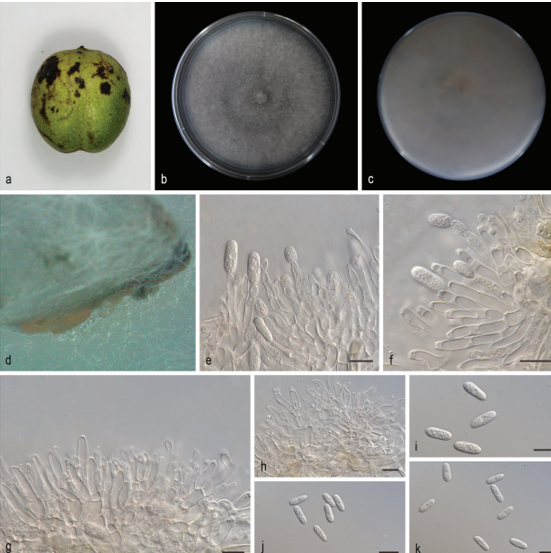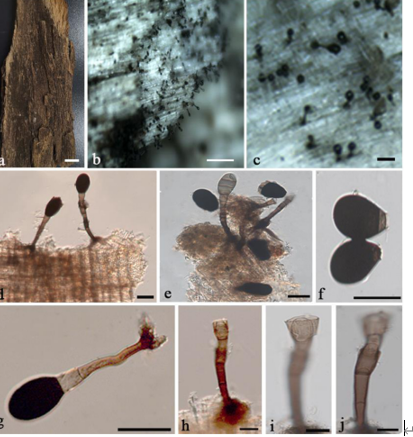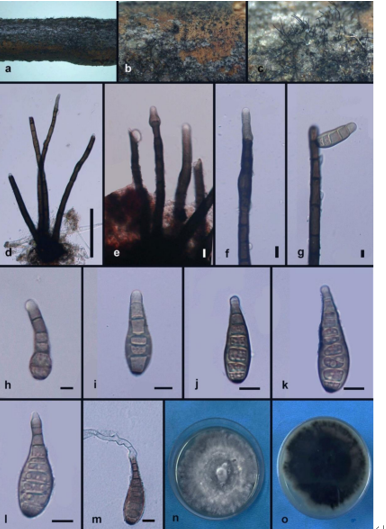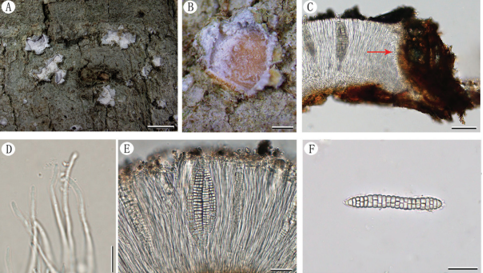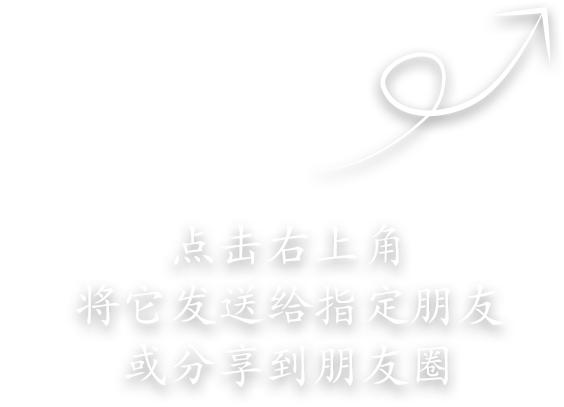Bradymyces pullus L. Su, W. Sun and M.C. Xiang, sp. nov. 2020
MycoBank MB 810888
Holotype: China: Tibet: Shigatse City, Tingri County, Qinghai-Tibet plateau, 28◦020 N, 87◦580 E, 4950 m a.s.l., from granite, 1 July 2012, Xingzhong Liu, (HMAS 245353 (dried culture)—holotype and CGMCC 3.17305—ex-type culture).
Morphological description
Hyphae 2.1–4.9-µm-wide (x = 3.4 µm, n = 20), brown to medium brown, guttulate, cylindrical, and moniliform parts frequently produced by enteroblastic proliferation (Figure 8D).Swollen cells globose to sub-globose, 7.9–21.6-µm-diam. (x = 13.1 µm, n = 10) (Figure 8G,H).Multicellular bodies globose, ellipsoidal or irregularly shaped, brown to dark brown, 8.6–16.3-µm (x = 14.2 µm, n = 10)-wide, developing intercalarily and terminally on the hyphae (Figure 8C,E,F).Endoconidia not observed.Culture characteristics: Colonies on MEA growing slowly, attaining 6-mm-diam. after 20 weeks at 25 ◦C, brown to black, with velvety, scant, aerial mycelia, glossy, and irregular margin; black in reverse, commonly with dark-brown crusts and excoriations on the surface (Figure 8A,B). Minimum 4 ◦C, optimum at 20–25 ◦C, and maximum 28 ◦C.
Habitat: from granite
Distribution: China
GenBank Accession:
Notes: This new species is phylogenetically close to B. oncorhynchi (MLBP/BIPP = 95%/0.99)(Figure 2). However, the growth rate of B. pullus is much slower (6 mm in 20 weeks on MEA at 25 ◦C) than that of B. oncorhynchi (5–8 mm in 42 day on MEA at 25 ◦C), and B. oncorhynchi also produces endoconidia, which were not observed in B. pullus [24].
Reference: Wei Sun , Lei Su , Shun Yang et al.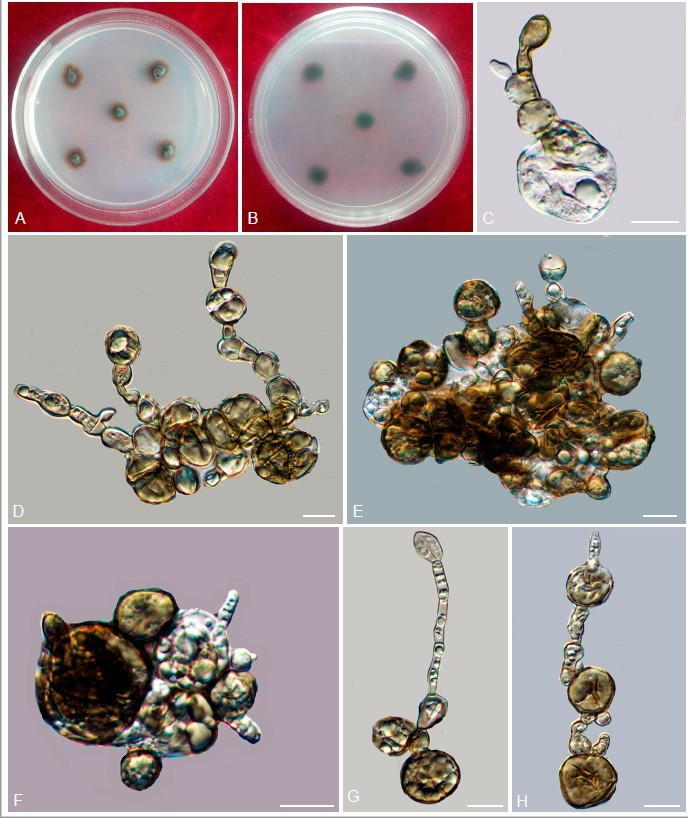
Bradymyces pullus (CGMCC 3.17305). (A,B) Colony forward and reverse after 20 weeks on MEA. (C,E,F) Solitary, enlarged, darkly pigmented multicellular bodies. (D) Moniliform hyphae with a mass of differentiated blastic proliferating hyphae. (G,H) Terminal and intercalary swollen cells. Scale bars: (C–H) = 10 µm.


